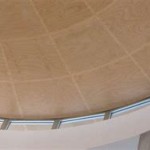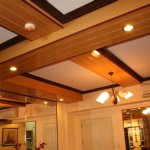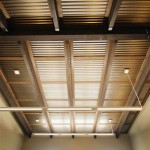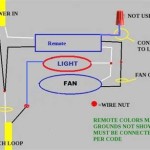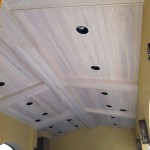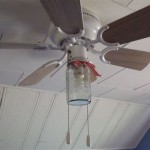How To Hang A Sheet From The Ceiling Without Drilling
Hanging a sheet from the ceiling can transform a space, creating a cozy atmosphere, a makeshift room divider, or a backdrop for photos and performances. The common concern when considering this decorative or functional alteration is the potential damage caused by drilling. Fortunately, several methods exist that allow for hanging sheets without the need for screws, nails, or permanent fixtures. These methods rely on adhesive solutions, tension techniques, and alternative fastening systems.
Successfully hanging a sheet without drilling requires careful planning, consideration of the sheet's weight and dimensions, and a thorough understanding of the available adhesive and tension-based options. The material of the ceiling, such as drywall, plaster, or concrete, will significantly influence the choice of method, as some adhesives perform better on certain surfaces than others. Preparation is key to ensuring a secure and aesthetically pleasing result. Prior to application, cleaning the ceiling surface is essential to remove dust, dirt, or grease that could prevent adhesives from properly adhering.
Furthermore, the choice of sheet fabric plays a role in the hanging process. Lighter fabrics, such as muslin or voile, will be easier to manage and require less robust adhesive solutions. Heavier fabrics, like thick cotton or canvas, will necessitate stronger adhesives and potentially the implementation of additional support mechanisms. The overall goal is to distribute the weight of the sheet evenly, minimizing the stress on any single point of attachment and preventing the adhesive from failing.
Utilizing Adhesive Hooks and Command Strips
Adhesive hooks and command strips represent a versatile and readily available option for hanging sheets without drilling. These products utilize a pressure-sensitive adhesive that bonds to the ceiling surface and provides a hook or loop for attaching the sheet. The weight capacity of these adhesives varies widely, so selecting a product appropriate for the sheet's weight is crucial. It is better to overestimate the weight and use hooks with a higher load capacity than to risk the sheet falling.
Prior to applying the adhesive hooks or command strips, meticulously clean the application area on the ceiling. Use a mild detergent and water to remove any dirt or grease, followed by a thorough drying process. This step ensures optimal adhesion and prevents premature failure of the adhesive bond. Once the area is clean and dry, carefully peel off the backing from the adhesive and firmly press the hook or strip onto the ceiling. Apply consistent pressure for the recommended duration, typically 30 seconds to one minute, as specified by the manufacturer.
The placement of the adhesive hooks or command strips is also a critical factor in the success of this method. Evenly space the hooks or strips along the desired length of the sheet, paying close attention to areas that might experience higher stress, such as corners or areas where the sheet is draped. For heavier sheets, consider using more hooks or strips to distribute the weight more effectively. Allow the adhesive to cure for the recommended time, often a few hours, before hanging the sheet. This allows the adhesive to fully bond to the ceiling surface, maximizing its holding power.
Once the adhesive has cured, the sheet can be attached to the hooks using various methods. For sheets with grommets, simply slide the grommets onto the hooks. For sheets without grommets, consider using binder clips or clothespins to attach the fabric to the hooks. Alternatively, create loops in the fabric and secure them around the hooks. Ensure that the weight of the sheet is evenly distributed across all the hooks to prevent any single hook from bearing too much load.
Employing Tension Rods and Fabric Clamps
Tension rods, commonly used for curtains and closet organization, can also be adapted for hanging sheets from the ceiling without drilling. This method requires two parallel walls or surfaces to create a secure anchor point for the tension rod. The rod is extended until it creates sufficient pressure against both surfaces, effectively holding it in place. The sheet is then draped or attached to the tension rod using fabric clamps or other fasteners.
Before installing the tension rod, accurately measure the distance between the two walls or surfaces. Select a tension rod that is slightly longer than this measurement, allowing for sufficient tension when extended. Position the rod at the desired height on the walls, ensuring that it is level and aligned. Extend the rod until it creates a snug fit against both surfaces. Fine-tune the tension by rotating the rod until it is securely in place. Avoid over-tightening the rod, as this can damage the walls or cause the rod to slip.
Once the tension rod is installed, the sheet can be attached using fabric clamps or other fasteners. Fabric clamps, such as bulldog clips or spring clamps, provide a secure grip on the fabric without damaging it. Evenly space the clamps along the top edge of the sheet and attach them to the tension rod. Ensure that the weight of the sheet is evenly distributed across all the clamps to prevent any single clamp from bearing too much load. For heavier sheets, consider using more clamps or stronger clamps to provide additional support.
If fabric clamps are not available, alternative fastening methods can be used. Sew loops or tabs onto the top edge of the sheet and thread them over the tension rod. Alternatively, drape the sheet over the tension rod, creating a gathered or pleated effect. Secure the sheet in place using safety pins or small clips. Ensure that the fasteners are strong enough to support the weight of the sheet and that they are concealed from view.
Utilizing Ceiling-Safe Tape and Fabric Glue
Ceiling-safe tape and fabric glue offer another avenue for securing sheets to the ceiling without resorting to drilling. This method involves directly adhering the sheet to the ceiling surface using a specialized tape or fabric glue that is designed to be removable and non-damaging. The success of this method hinges on selecting the appropriate adhesive product and properly preparing the ceiling surface. Testing the tape or glue on an inconspicuous area of the ceiling before applying it to the entire sheet is advisable to ensure it doesn't damage the surface.
Ceiling-safe tape, such as painter's tape or masking tape specifically designed for delicate surfaces, provides a low-tack adhesive that is less likely to damage the paint or finish of the ceiling. To use ceiling-safe tape, cut strips of tape and adhere them to the top edge of the sheet. Position the sheet against the ceiling and press firmly on the tape to secure it in place. Use multiple strips of tape, spaced evenly along the edge of the sheet, to distribute the weight and provide a more secure hold. For heavier sheets, consider reinforcing the tape with additional layers or using wider strips of tape.
Fabric glue offers a more permanent bond than ceiling-safe tape, but it is essential to choose a fabric glue that is specifically designed for use on ceilings and that is removable without damaging the surface. Before applying the fabric glue, thoroughly clean the ceiling surface to remove any dirt or grease. Apply a thin, even layer of fabric glue to the top edge of the sheet. Position the sheet against the ceiling and press firmly to ensure good contact between the fabric and the ceiling surface. Use clamps or weights to hold the sheet in place while the glue dries. Follow the manufacturer's instructions for drying time and removal procedures.
When removing the sheet from the ceiling, carefully peel the tape or glue away from the surface. Avoid tearing or pulling abruptly, as this can damage the paint or finish of the ceiling. If the adhesive is difficult to remove, try using a heat gun or hairdryer to soften the adhesive before peeling it away. For stubborn residue, gently rub the area with a damp cloth or a mild adhesive remover. Always test the adhesive remover on an inconspicuous area of the ceiling before applying it to the entire surface.

How To Hang A Canopy From The Ceiling Without Drilling Holes

How To Hang Curtains Around A Bed Without Drilling
How To Hang A Canopy From The Ceiling Without Drilling Holes Hunker

How To Hang A Canopy From The Ceiling Without Drilling Holes Hunker

Diy Canopy Bed No Drill Curtain Rod

How To Hang A Canopy From The Ceiling Without Drilling Holes Hunker

Diy Canopy Bed Without Drilling Holes

How To Hang A Canopy From The Ceiling Without Drilling Holes Hunker

How To Make A Canopy Bed Without Drilling Into The Ceiling Hunker

How To Hang Drywall By Yourself Young House Love
Related Posts

